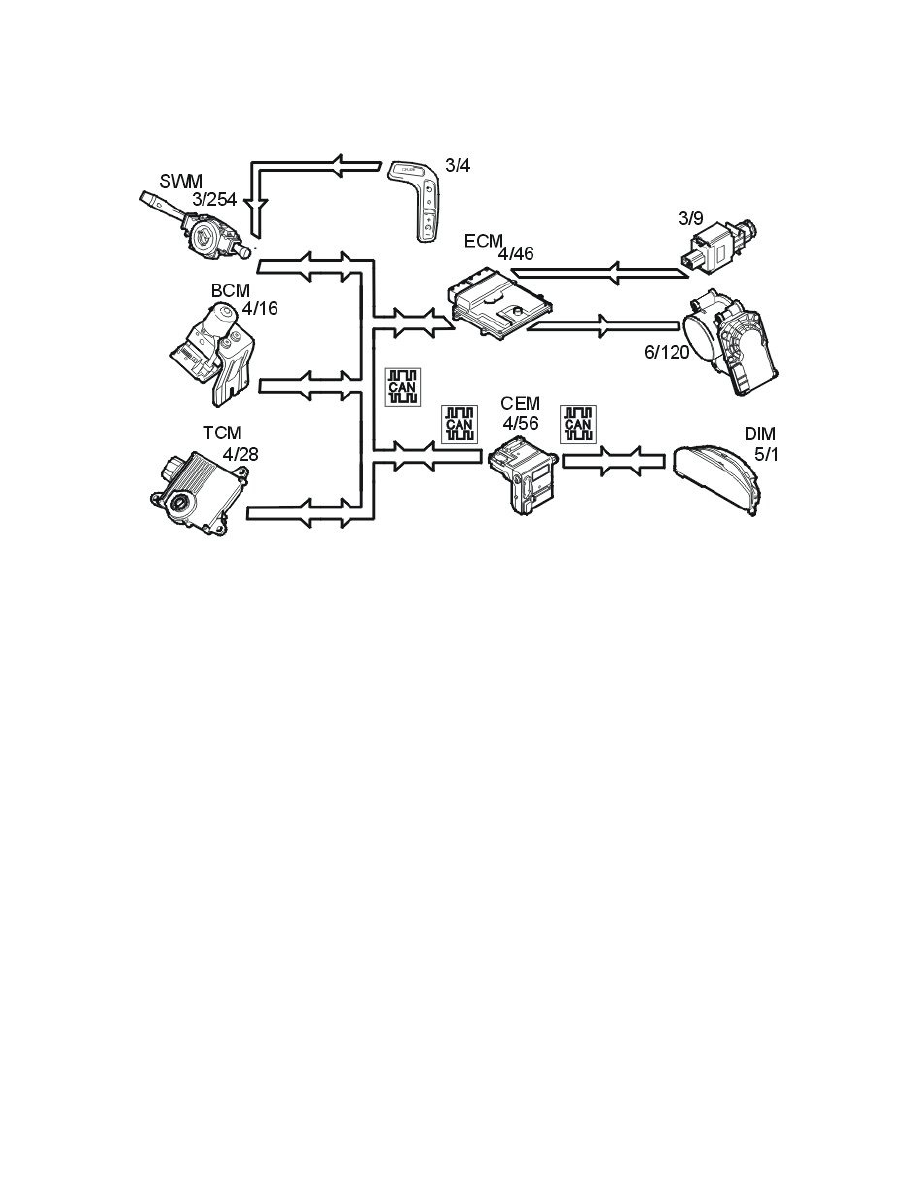XC90 AWD V8-4.4L VIN 85 B8444S (2005)

In order for the correct oil level to be calculated, temporary oil level changes in the oil sump must be added to the calculation, for example when driving
on an incline, during cornering and the like. These calculations are performed by the engine control module (ECM) using the oil level sensor signal and a
number of other parameters such as the vehicle speed signal and load signal.
Regulating the cruise control
The cruise control function is an example of distributed functionality.
The following components are used when regulating the cruise control:
-
engine control module (ECM) (4/46)
-
steering wheel module (SWM) (3/254)
-
cruise control, control unit (3/4)
-
central electronic module (CEM) (4/56)
-
brake control module (BCM) (4/16) (brake pedal position, speed signal)
-
driver information module (DIM) (5/1) (cruise control lamp)
-
transmission control module (TCM) (4/28)
-
electronic throttle unit (6/120)
-
stop lamp switch (3/9).
To activate cruise control the function must be switched on using the "CRUISE" button. A lamp lights up in the driver information module (DIM).
The driver activates the function by pressing the SET+ or SET- button. A message is then transmitted via the low speed side of the Controller area
network (CAN) to the central electronic module (CEM) which then transmits the message on via the high speed side of the Controller area network
(CAN) to the engine control module (ECM).
The engine control module (ECM) controls the throttle angle so that a constant speed is maintained using the vehicle speed signal from the Brake
Control Module (BCM). The transmission control module (TCM) also receives a message indicating that cruise control is active via the Controller area
network (CAN), so that the transmission follows certain shifting patterns when the cruise control is active.
If the accelerator pedal (AP) is depressed the speed increases as normal and then resumes to the stored value when the driver releases the accelerator
pedal (AP) again.
The engine control module (ECM) continually stores the speed. If the cruise control is disengaged, if for example the driver depresses the brake pedal,
the previous speed can be resumed by pressing the "RESUME" button.
The cruise control cannot be activated below a certain speed.
Cruise control is disengaged:
-
when the driver depresses the brake pedal
-
when the driver presses the "CRUISE" button on the steering wheel
-
when the driver depresses the "0" button on the steering wheel
-
if "P" or "N" position is transmitted on the controller area network (CAN)
-
if the speed deviates too much from the set value
-
when the control system detects a fault that prevents activation. (For further information, see diagnostic trouble code (DTC) information for the
relevant diagnostic trouble codes (DTCs)).
